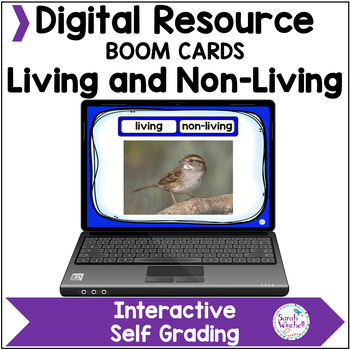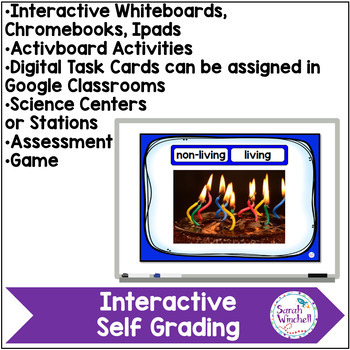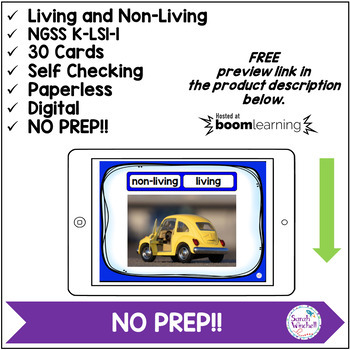Living and Nonliving Things Sort Boom™ Cards Science Lesson Kinder 1st Grade
- PDF
- Google Apps™
- Internet Activities

What educators are saying
Description
Students will identify a picture as living or non-living. Photographs of living and nonliving things, animals, and plants are featured in this resource.
This set includes 30 cards featuring photos of living and non-living objects, animals, and plants.
BOOM Cards are an amazing digital learning tool! You can see a preview of this deck by clicking on the link below. Read more to find out about setting up your free account.
Made to used with:
- Interactive whiteboards
- Desktops
- Chromebooks
- Ipads
- Iphones and other handheld devices.
- Google Classroom
You will receive a PDF with the link to your digital purchase that will take you to the BOOM Learning Website. You can see the deck you are purchasing by using the link below!
See This Boom Card Deck in Action
Boom Cards are:
- Self Checking
- Interactive
- Paperless Digital Learning
- They give you instant feedback
What are you buying?
You are buying Boom Cards: cloud-based digital resources. Boom Cards play on modern browsers (released in the last three years). Free player apps are also available. Not sure if your browser is modern enough? Try the Boom Card Deck preview below.
To use Boom Cards, YOU MUST OPEN AT LEAST A FREE Boom Learning ACCOUNT (just like you have to have a Google account to use Google resources). Click the links inside the product .pdf to redeem your Boom Cards and create an account (or add to your account if you already have one). Free accounts include the ability to generate student progress reports for 5 students and to make up to 5 DIY decks. Free accounts include the ability to assign Boom Cards to unlimited students (without progress reports) using the Fast Play pin option available in the Library.
If you are new to Boom Learning, you will receive a 90-day free premium upgrade that includes student progress reports for up to 150 students. At the end of the trial period, you will be invited to purchase the upgrade. If you do not, you will be moved to a free account. You may upgrade, downgrade or cancel at any time. If you do not upgrade, you can continue using your purchased Boom Cards with Fast Play.
I know you will enjoy using BOOM Cards in your classroom! As always please feel free to ask any questions. I am glad to help you!
Thanks for visiting,
Sarah





